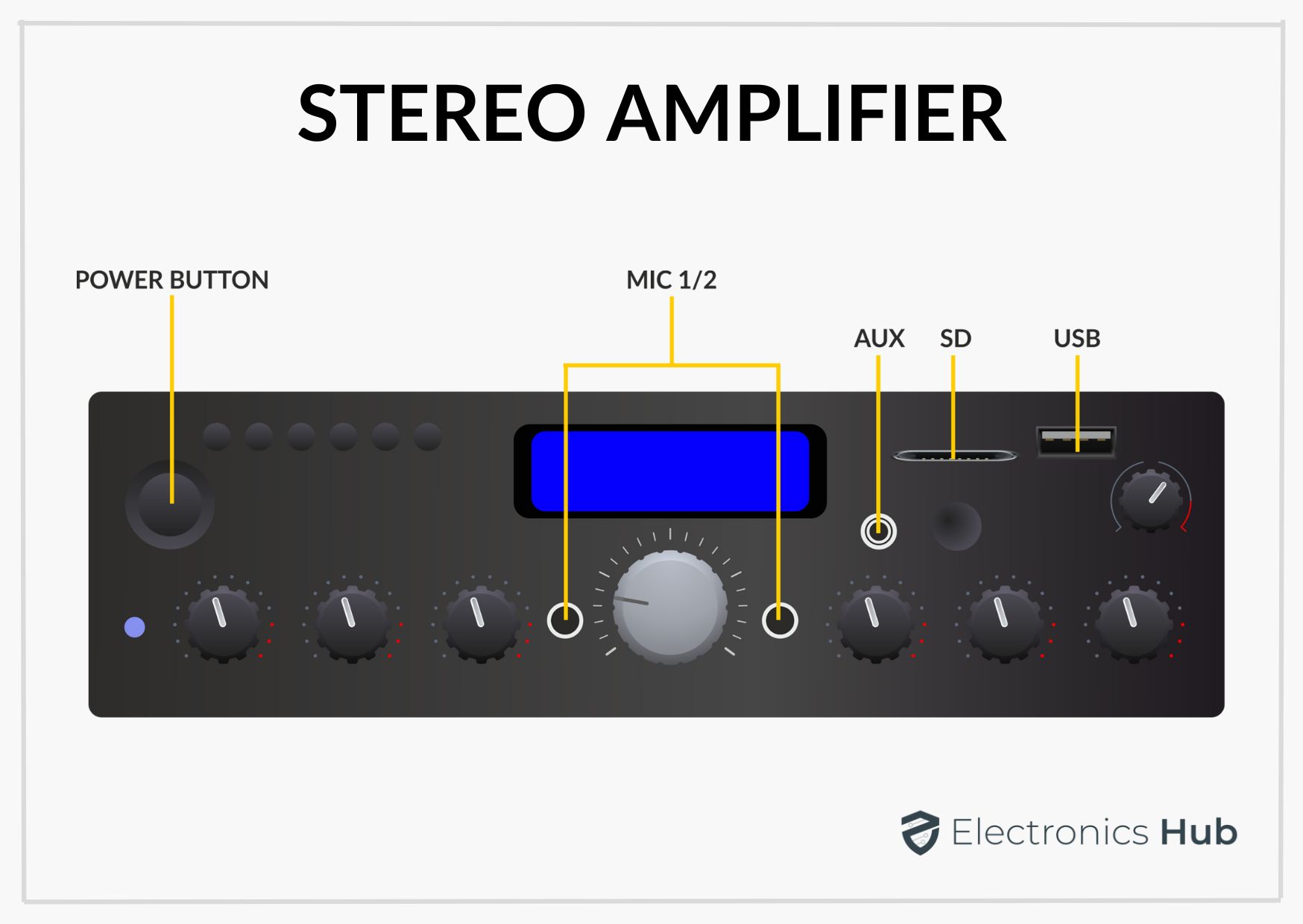Outline
ToggleUnderstanding Stereo Amplifiers

Amplifiers make radio voices audible to humans; without them, it would feel like a lost murmur to humans.
A great foundation of vigor is needed to make this audible. That abrupt outpouring of power can be a reason for the distortion of the auditory range that will produce the music.
Understanding Amplifiers
Amplifiers, as the name suggests, are a device that enhances the sound quality and fragile currents of sound so they can be better listened to. In the beginning, the amplifier was developed in the early 1900s by a man named lee de forest; he made an electric vacuum tube as the first picture of the amplifier.
However, that wasn’t the last imagery of it. More new designs were developed when the experimenters were exposed to new information.
They were successful in making a thing called a triode, which is a sort of vacuum tube. The triode comprised three components, which are (positive terminal-platinum plate, platinum grid, and the negative terminal cathode). This grid was called the input, while the output was the cathode.
When the power source was turned on and transferred cathode, the result got intense, the electrons received a high amount of undesirable voltage and started rushing toward the positive plate, which is the output. This process makes a current flow begin. The platinum grid is hit by a negative voltage, which disrupts the current flow & fluctuates the cathode’s voltage. This is the process that makes amplification.
Different Kinds of Amplifiers
Amplifiers, like any other device, can be separated into classes. They can be classified as the recurrence rate, production, control, and electrical energy.
Not only are those amplifiers classified from place to place to which they are being fitted. It can be a home theatre, a club, a school, etc. We have a wide range of amplifiers because we use them almost everywhere. There are 3 main subgroups of amplifiers,
- Preamplifiers: These receive weak signals like mic-signals and amplify them to a higher tendency.
- Power amplifiers: These amplifiers intensify low-control signs, such as radio signals, for the other devices to get a hold of them.
- Stereo amplifier: It consists of 2 output channels, which are used to receive output signals from a device and send them to the loudspeakers connected to the amplifiers.
Work Mechanisms of Stereo Amplifiers
These amplifiers are used in different places because of the perks of good sound quality for different people and their situations & conditions. There are a lot of uses for these stereo amplifiers, and they can be used in houses, offices, schools, and theatres to help amplify the signals coming from CD or DVD players and strengthen them to get heard by people.
These amplifiers consist of three ports (there is an input port that is used for the connectivity of the signal source, an output port that is a source of sending signals toward speakers, and a power source connector). A transistor is used to convert an irregular current into a straight current. This plays the role of a valve that makes the current flow in different amounts. The consistency of the current flow depends upon its source (CD, TV, and DVD).
Matching with Speakers
1. Impedance Matching
There is an example to describe impedance matching; for example, when we try to water the plants in a big garden, we use a long pipe; if we don’t have a long tube, we try to match it up with another piece of pipe, but if the size of the pipe is not as same as the last piece there is an excellent chance that water may leak.
The impedance matching case is also the same if the impedance is not accurate, and if it is not matched correctly with the amplifier to speaker, then there is an excellent chance of distortion in your sound.
2. Power
There are two main and necessary aspects of power. Continuous power and dynamic power. If a specification sheet says 50 watts of constant power into 8-ohms, that means that 50-watt power is required to use into an 8-ohms speaker.
On the other hand, dynamic power measures an amplifier’s maximum output when forced to go beyond its limits.
3. Sensitivity
Sensitivity is directly proportional to how loud a speaker can get. When the energy and the space are the same, a speaker with lower sensitivity will sound quieter at that place than a high-sensitivity speaker. A speaker with a large sensitivity ratio can save your budget and refrain you from using big amplifiers.
Choosing the Perfect Stereo Amplifier
As previously discussed, stereo amplifiers are the most improvised way of elevating sound quality. Everyone reaches out to google to search for the pieces they want to buy. This makes them easy to decide which one they should buy.
Stereo amplifiers originate in a single box and have two more devices (preamp and power amp) in 1. They are said to take up less space because they come in pairs already attached in one box.
Compatibility is the course of corresponding your speakers and amplifiers perfectly.
Conclusion
By these lines, as mentioned above, it can be concluded that there are various amplifiers based on a person’s personal choice. A stereo amplifier consists of two output channels and one input channel. An amplifier is used to enhance the sound quality. Thus, stereo use can help get a nice and clear sound perception.

